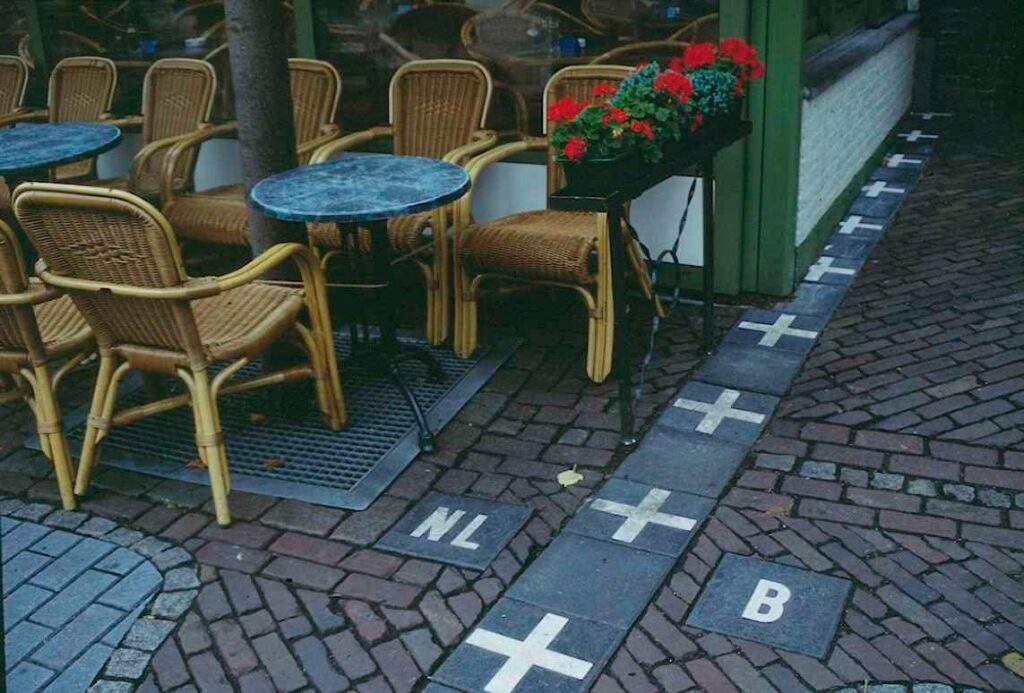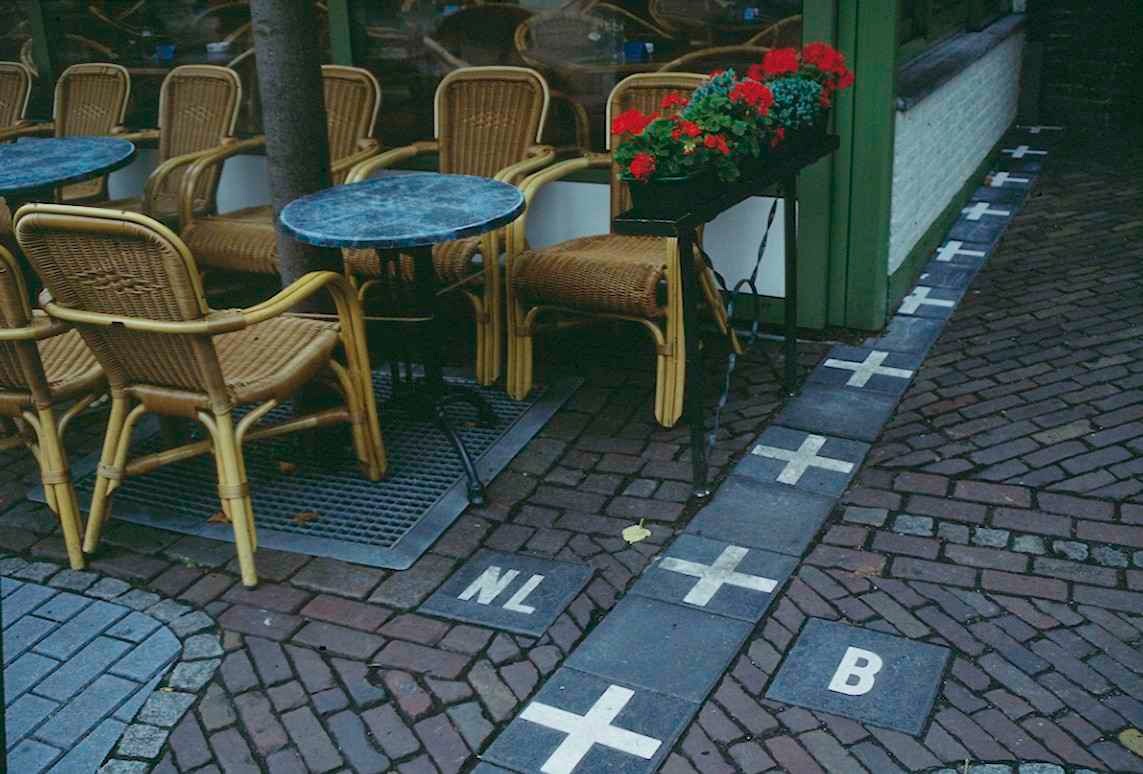
When we think of borders, we don’t always associate them with a carefree sort of happiness. Geographical demarcations have led to catastrophes since time immemorial. Of course, there have been peaceful divisions, which have helped both sides grow with a sense of pride that is not a facade and does not stem from allegories that boast of wrongdoings. Border demarcation activities have been tempestuous, the prime example being the Partition of 1947.
The India-Pakistan Border at Wagah: Of Tradition and Territory
The tensity between India and Pakistan has been discernible since the two countries split during the partition. India was splintered into two based on religious grounds, and since that one day in 1947 till today, both these countries remain at a tug of war on mixed swards, bearing no surprise that the borders between the two countries are a sensitive matter. Wagah is one such testament to this certitude. Except the Wagah border is not merely just a border; it’s a dichotomous ground of both brotherhood and rivalry.
Wagah is a small village located 32 km from Amritsar in India and 24 km from Lahore in Pakistan. The town is situated at the Radcliffe Line, the separation line drawn when India was divided. Wagah lies 600 meters west of the line in the Wagah Zone of Lahore, Punjab, Pakistan. Hence the reason why the border crossing is known as the Wagah border in Pakistan. In India, however, the border crossing is commonly known as the Attari border crossing—eponymous to the village Attari that lies 500 meters from the line within the Indian boundaries. At this cross-section every day, the Indian Border Security Force (BSF) and Pakistan Rangers (PR) showcase a ritual that has been persistent since 1959, two hours before sunset, by a lowering of the flags ceremony.
The ceremony kicks off with a revere parade by soldiers on both ends and concludes with a carefully coordinated Lowering of Both countries’ Flags. This beating march attracts massive crowds from both sides and is easily one of the most witnessed military ceremonies, drawing huge numbers from natives and international tourists. The thumping of the boots, the eye-to-eye fixated gaze, the underlying electrifying tension, the martial cries, and the crowd chants of ‘Jai Hind’ and ‘Pakistan Zindabad’ in the background make the Wagah-Attari border ceremony an overtly zealous affair full of gallant displays of competitiveness and hubris.
Although even the crowd-drawing flame of this patriotic display couldn’t slip out of the reaches of the pandemic, the parade, which was deemed unique because it survived times of adversities between the two nations, came to a halt during the Coronavirus pandemic last year. In the past, the parade was clasped for one day after a suicide attack on the Wagah Border on November 2, 2014. Making India cancelled the parade from its side, and on September 29, 2016, India ceased the parade from its end due to strained relations between the two nations due to Indo-Pak border conflicts.
The Haskell Free Library at the US-Canada Border: Of Friendship and Reunion
Another substantially bizarre border is the line drawn through the Haskell Free Library situated on the US-Canada Border. The library was completed in 1904 and was a tribute to Mrs Haskell’s late husband, Carlos. The building is stranded directly between Stanstead, Quebec, and Derby Line, Vermont, with the official U.S.-Canada borderline running right across the floor. The library even has two different addresses: One in Stanstead, Quebec, Canada, and one in the derby line, Vermont, U.S. While the library’s entrance gate is on the U.S. side of the building, most books are on the Canadian side. Hence, civilians trying to select a book from the shelves inadvertently and openly cross the international borders multiple times!
The library also has an Opera house, shared between the two boundaries, with most of its seats in the U.S. and its stage in Canada. The Haskell is often said to be the only library in the U.S. with no books and the only opera house in the country with no stage. A Passport or any other form of authorisation is not required to go from country to country ‘inside’ the library. However, you cannot cross borders and go to the other side through the library. Visitors are expected to return to their sides after they have dropped in; if they do not, potential litigation and heavy fines can be imposed on them.
Due to its distinctive nature and history of importance, the library is a National heritage site in both countries. In addition to this, Among the strict U.S travel bans for few countries and intangible visa proceedings, the library served as a holy ground in reuniting Iranian families. However, since the U.S-Canada Border is shut right now, the library is closed to the public in the wake of the pandemic.
The Belgium-Netherlands Border at Baarle: A Multi-national Mosaic
As absurd as this might sound, if you went to Baarle Nassau (border town in the Netherlands whose Belgian Counterpart is Baarle Hertog), you can buy a coffee in one country and drink it in the other country! Baarle has been referred to as the most confusing border town, time and again, but it remains one of the friendliest border towns. The border runs through every part of the town, splitting almost everything that comes in its path, including banks and houses. What’s even more amusing is that if a border runs through any house, the house’s location is decided by the place where the front door is situated. Many homes have two numbers and a little flag to signify which side belongs to which country.
All these absurdities can be attributed to land treaties and exchanges that date back to the middle ages. The treaty of Maastricht of 1834 has defined the borders as they are today.
The pandemic did a number in Baarle though. Since Belgium had imposed a much stricter lockdown, none of the Belgian restaurants and pubs could open for service, while just across the street on the Dutch side, life was gradually getting back to normal. Moreover, because of the lockdown, the people couldn’t cross the border and go over to the other side even if it was just a 2-minute walk away.
As we see from the situation in Baarle and other places, the pandemic has been tough on one too many people, in more ways than one can imagine. Lockdowns and other statewide measures to curb the spread of the virus have been hard on many peoples’ jobs and have also fuelled mental health issues. But, the tunnel has to end, and it can never be pitch dark at the end of the tunnel. People living around borders where disputes aren’t deep-rooted have been hoping for better times, and with vaccines now being available, the chink in their armour is starting to fade.
Written by Adil Khan and Avaneesh M for MTTN
Edited by Lavya Joshi for MTTN
Featured Image courtesy The Independent

Leave a Reply
You must be logged in to post a comment.